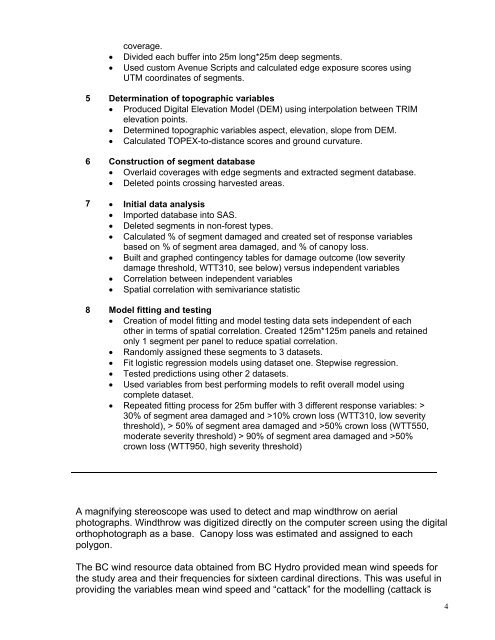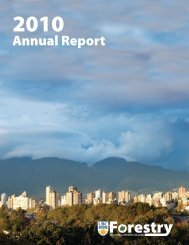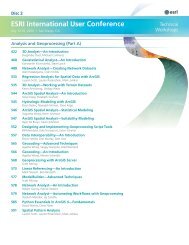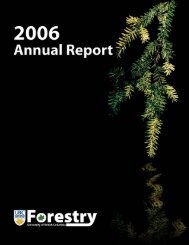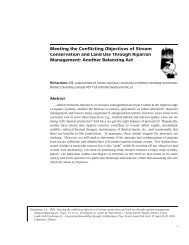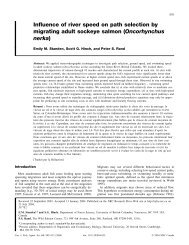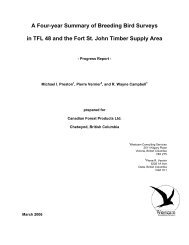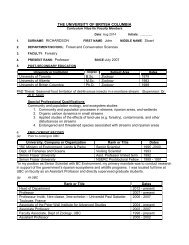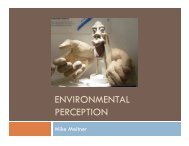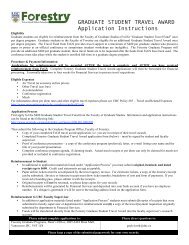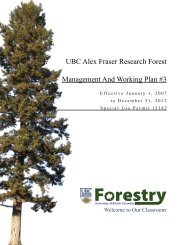Windthrow Hazard Mapping using GIS, Canadian Forest Products ...
Windthrow Hazard Mapping using GIS, Canadian Forest Products ...
Windthrow Hazard Mapping using GIS, Canadian Forest Products ...
You also want an ePaper? Increase the reach of your titles
YUMPU automatically turns print PDFs into web optimized ePapers that Google loves.
coverage.• Divided each buffer into 25m long*25m deep segments.• Used custom Avenue Scripts and calculated edge exposure scores <strong>using</strong>UTM coordinates of segments.5 Determination of topographic variables• Produced Digital Elevation Model (DEM) <strong>using</strong> interpolation between TRIMelevation points.• Determined topographic variables aspect, elevation, slope from DEM.• Calculated TOPEX-to-distance scores and ground curvature.6 Construction of segment database• Overlaid coverages with edge segments and extracted segment database.• Deleted points crossing harvested areas.7 • Initial data analysis• Imported database into SAS.• Deleted segments in non-forest types.• Calculated % of segment damaged and created set of response variablesbased on % of segment area damaged, and % of canopy loss.• Built and graphed contingency tables for damage outcome (low severitydamage threshold, WTT310, see below) versus independent variables• Correlation between independent variables• Spatial correlation with semivariance statistic8 Model fitting and testing• Creation of model fitting and model testing data sets independent of eachother in terms of spatial correlation. Created 125m*125m panels and retainedonly 1 segment per panel to reduce spatial correlation.• Randomly assigned these segments to 3 datasets.• Fit logistic regression models <strong>using</strong> dataset one. Stepwise regression.• Tested predictions <strong>using</strong> other 2 datasets.• Used variables from best performing models to refit overall model <strong>using</strong>complete dataset.• Repeated fitting process for 25m buffer with 3 different response variables: >30% of segment area damaged and >10% crown loss (WTT310, low severitythreshold), > 50% of segment area damaged and >50% crown loss (WTT550,moderate severity threshold) > 90% of segment area damaged and >50%crown loss (WTT950, high severity threshold)A magnifying stereoscope was used to detect and map windthrow on aerialphotographs. <strong>Windthrow</strong> was digitized directly on the computer screen <strong>using</strong> the digitalorthophotograph as a base. Canopy loss was estimated and assigned to eachpolygon.The BC wind resource data obtained from BC Hydro provided mean wind speeds forthe study area and their frequencies for sixteen cardinal directions. This was useful inproviding the variables mean wind speed and “cattack” for the modelling (cattack is4


